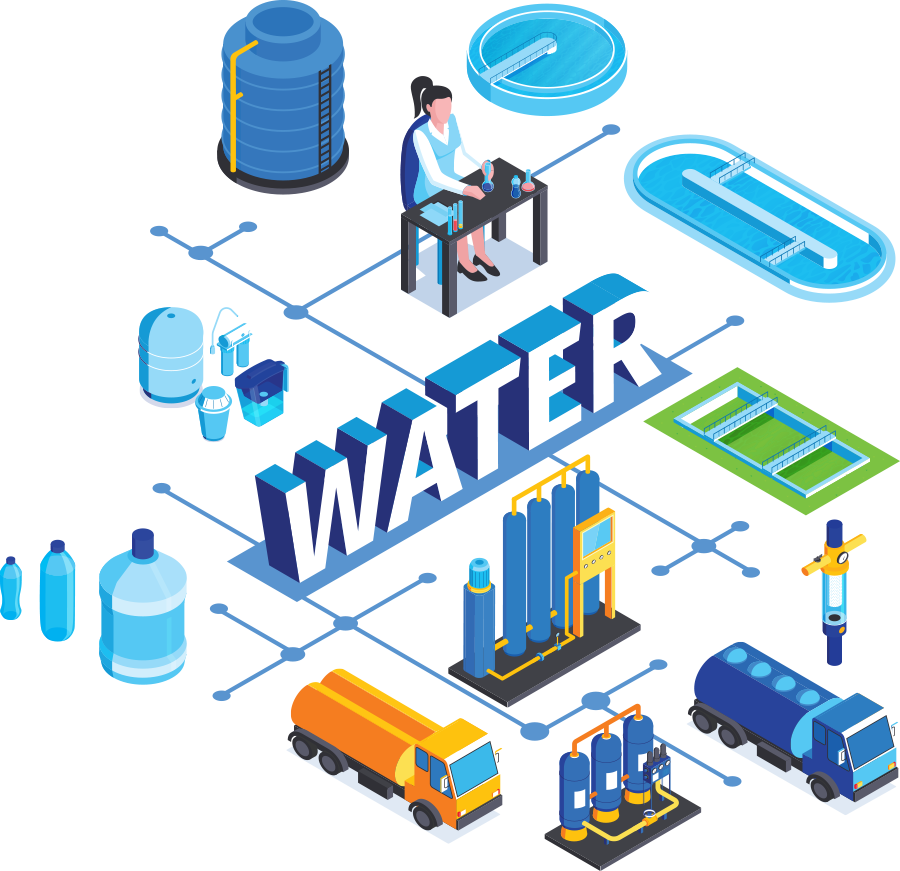
- Water, Nature and Humankind
- K-water Dictionary
-
K-water contributes to creating a healthy
earth through river basin water
environmental management- Written by. Choi Hang-jwa
- Source by. K-water
- K-water designs and implements policies aimed at improving the integrated water environment of each basin. It not only carries out the existing disaster prevention-oriented river maintenance, but also conducts eco-friendly river management, with the aim of improving the water quality and ecosystems of river basins. Let’s look at some key terms related with K-water, which is making concerted efforts to contribute to the creation of a healthy earth and a clean natural environment.

Waterside Ecological Belt
A waterside ecological belt is a generic term that encompasses riverside forests, wetlands, and grasslands around rivers, dam flood control areas, and waterfronts, all of which play the role of an ecological filter in a broad sense. K-water has conducted a trial project to operate a waterside ecological belt in the floodplain of Daecheong Dam, and has consequently solved the problem of unauthorized use of areas prone to flooding by the dam, increased the utilization of the floodplain, and restored the floodplain into an eco-friendly water quality preservation area.

Water Supply Source-based Pollution Reduction Project
The project to reduce pollution from water supply sources is designed to identify the types and characteristics of pollution sources by precisely monitoring water quality in selected areas where water quality has deteriorated in the upper reaches of metropolitan water supply sources, and to establish a locally-customized pollution reduction plan based on the findings. Entrusted by the Ministry of Environment, K-water has selected four upstream areas of the Naeseongcheon Stream, Daecheongho Lake, Bohyeonsan Dam, and Changnyeong Hamanbo Reservoir, and is implementing the “water supply source-based pollution reduction project” for the five-year period 2020 -2024.

Restoration of Estuarine Ecosystems
Brackish water is a mixture of seawater and freshwater water that is less saline than seawater. This mixture of two kinds of water contributes to major environmental changes and the formation of a unique ecosystem. Notably, the Nakdonggang River estuary has such conditions. Along with the trial opening of the Nakdonggang River estuary, K-water has proved that the water quality and the ecosystem can be improved, and has also confirmed the possibility of recovery of the estuarine ecosystem. In fact, the vitality of the ecosystem has been confirmed by the return of various fish species, including eel, sea bass and gray mullet, to the estuary.

Integrated River Basin Water Management
A river basin is an area of land from which all water flows into a river when it rains. For instance, when it rains heavily and rainwater flows, the Nakdonggang River basin is the extensive area from which all water, including main and branch streams, flows into the Nakdonggang River. Designed to ensure optimal water control, integrated water management consists in controlling water quantity and quality, the ecosystem and the environment - which previously were individually controlled – in a comprehensive and intelligent manner, after taking into consideration every factor that affects water management in a given area. Accordingly, K-water implements integrated water management at each river basin in order to respond to climate change and to manage water quality in a stable manner.

Distribution of Agricultural Best Management Practice (BMP)
Agricultural BMPs are techniques used to reduce rainfall runoff pollution in farming areas by improving certain technical elements of farming. Such techniques include the control of irrigation inlets, the use of slow-release fertilizers, the installation of sediment traps, and the covering of ground surfaces. K-water is dedicated to establishing a clean and safe water environment by increasing the efficiency of its efforts to improve water quality and distributing agricultural BMPs to reduce sources of farming pollution.

